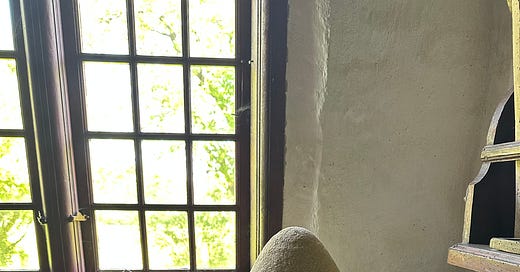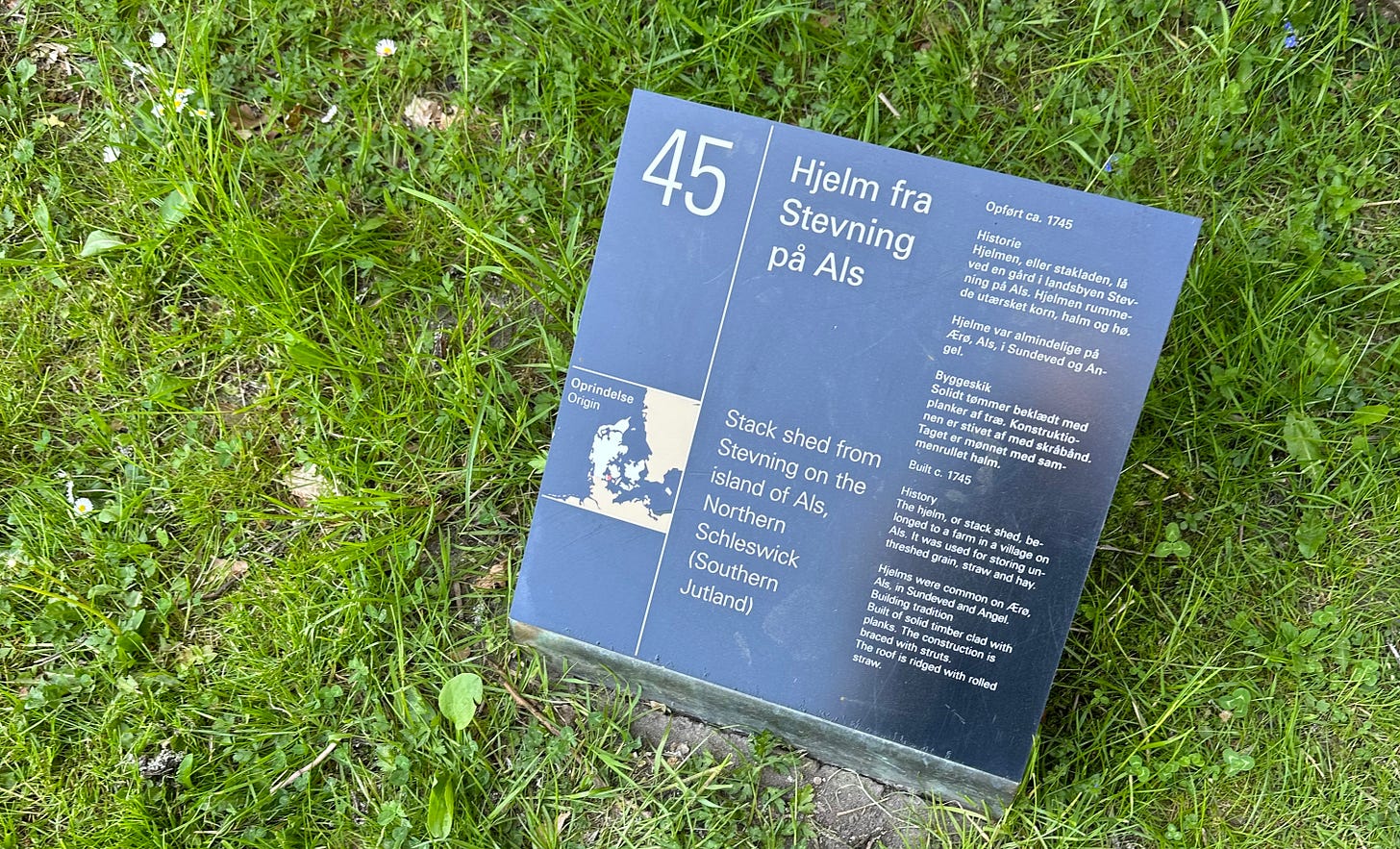We Find History in Quiet Places
And our tendencies to overlook the power of everyday magic in the buildings around us
This is the free version of my newsletter. If you want to support my writing (and receive two free culinary workshops, access to my recipes + archives, and other resources as a thank you), please consider a paid subscription for yourself or a gift subscription for a friend.
If you prefer, you can also support my work on Patreon, starting at $1/month, or you can subscribe through my website.
If you can't afford the paid newsletter, but believe it would be an asset to you in your own culinary/writing/creative journey, please reach out and we'll figure something out!
In May, I visited the Frilandmuseet (Open Air Museum) outside Copenhagen. Unlike most museums, where collections are housed in one centralized building, the museum is comprised of many, many buildings collected in one place spanning hundreds of acres, all highlighting the agricultural history of Denmark (plus some Swedish farm buildings, too).
Farms’ buildings and equipment, in whole or in part, have been carefully transported to this space, representing a cross-section of social classes and time periods.
There’s plenty to be said about this type of living history museum, but what I found myself really fixating on were the parts of that history most of my fellow visitors overlooked as we wandered about: The barrel in the corner that once held beer, the (replica) loaf sugar on the kitchen table, the ways the bricks in the floor show pattern of wear: Suggesting the paths most often traversed within the home.
But are those wear patterns from 100+ years of visitors’ feet, or did they keep the original flooring bricks intact when they moved the structures there? I don’t actually know. If one could see both scenarios side by side, it would offer an interesting comparison of the traces of use left behind by different ways of experiencing a home: As a visitor, versus a resident.

What struck me most deeply, though, was one particular storage building. In this building, grain was stored and brewing and baking and butchering equipment were kept (and, most likely, also used).
People walked past without barely a glance, at most briefly pausing to say something like ‘huh, cool storage shed.’
But the magic that happened here! The fact that this little barn held the tools for survival, housed the techniques, traditions, and daily practices that kept people alive and kicking. This isn’t just about storage or cool skills, it’s literally about survival. And in the case of ferments, survival that yields some really delicious products.
I imagined the microbial fingerprint of those delicious survival mechanisms embedded into the beams and the walls, lovingly, pressed slightly more deeply with each passing year and new round of brewing and baking. In an attempt (almost certainly unsuccessful, but perhaps not), I plucked a few leaves of plantain and tucked them into my jar of adventure ferment brine later when I got back to the hotel.
We often overlook the magic that’s right in front of our eyes and under our feet.
And it’s powerful magic, too: the magic of knowing the stories behind your food, and engaging in the everyday magic of preparing and sharing it (and storing it, and preserving it). It’s magic that doesn’t ask a specific spiritual or religious affiliation or any particular innate gifts for divination or incantation. It simply asks for our devotion through practice. A practice that I find to be both the most down to Earth, run of the mill thing and the most divine.
I feel that magic pretty powerfully just looking at the inside of this building. Don’t you?
As I wandered and encountered other outbuildings, I thought about the power embodied in farm outbuildings in general. I’ve spent a fair amount of time in storage barns, chicken coops, and various other agricultural structures. I find our colloquial use of ‘barn’ interesting because many people I’ve met (not on farms) use it to lump a variety of outbuildings under. If it’s not a house and is a building on a farm, it’s a barn, essentially.
My observations about our linguistic tendencies aside, I began to reflect on the role of the farm outbuildings we use to store and preserve our food (from grain stores to smokehouses) as holy spaces. Not holy in a religious sense (I am decidedly not religious, though very spiritual), but holy in that raw, lived experience, everyday magic way that tugs at my heart strings most deeply.
They are holy because they support our lives. They are where we tend to the rituals of being, the most holy acts of feeding, and being fed. Like religious holy places, they can also be places of violence and oppression. But like a church building, they are not inherently so. It is the choices we make around the rituals we perform that determine the shape of our relationship to that place.
This particular museum gave me the chance to experience museums as I enjoy most: With a chance to wander around, find the busy and not-so-busy areas, encounter new things, reflect, and ultimately leave shaped every so slightly differently than when I came in.
The experience was deepened by the natural spaces dotted throughout the park: Bits of woodland, fields, and some hawthorn hedges. I find some of my greatest lessons in spaces like this, that sit at the intersection of our own pasts, futures, and traditions, and the natural world. A reminder of our interconnection and our part of a long timeline that extends well beyond ourselves.
Your support of this newsletter literally makes my dreams come true, helping me devote my time to writing and to sending more and better recipes, interviews, and food stories to you. Thank you for being a part of my work!










Beautifully written and observed. I went to that museum a few years ago , and you took me back there. My visit was before I grew to love fermenting, so I really enjoyed your thoughts about how the storage building was integral to survival.
It would be interesting to know more about the sugar loaf. Is it just sugar, but in a shape? Did one scrape it off to use? It is certainly an interesting centrepiece.